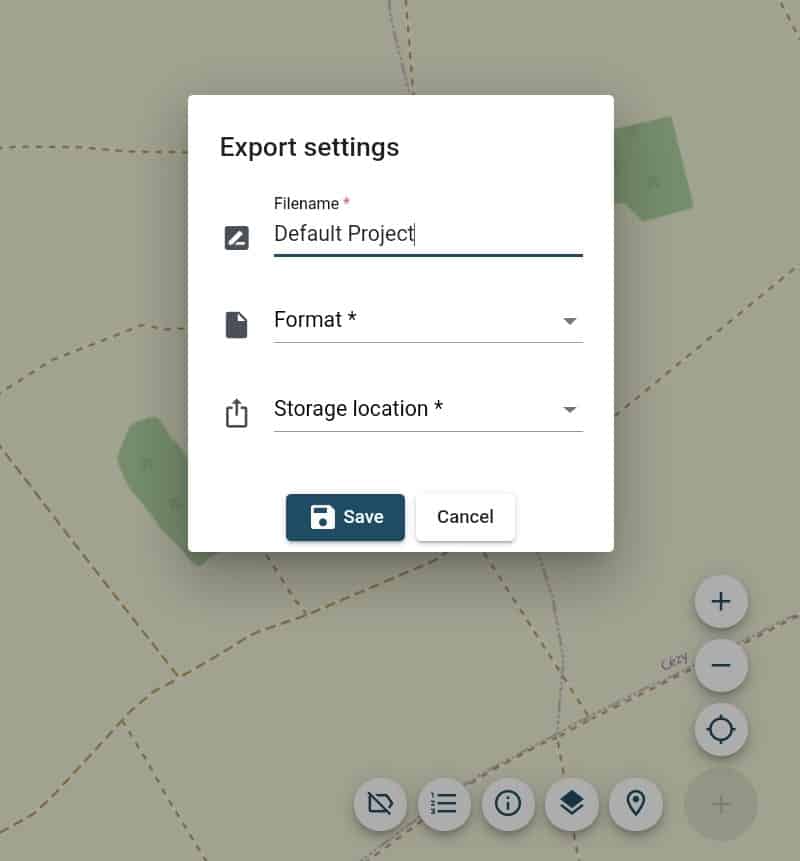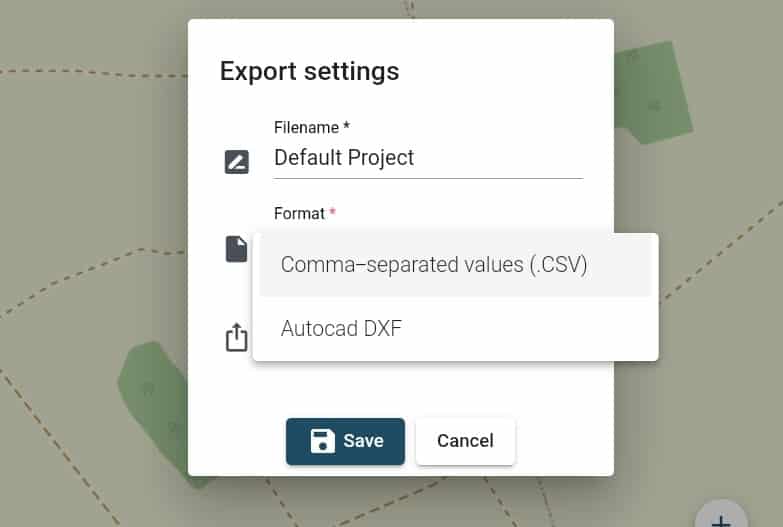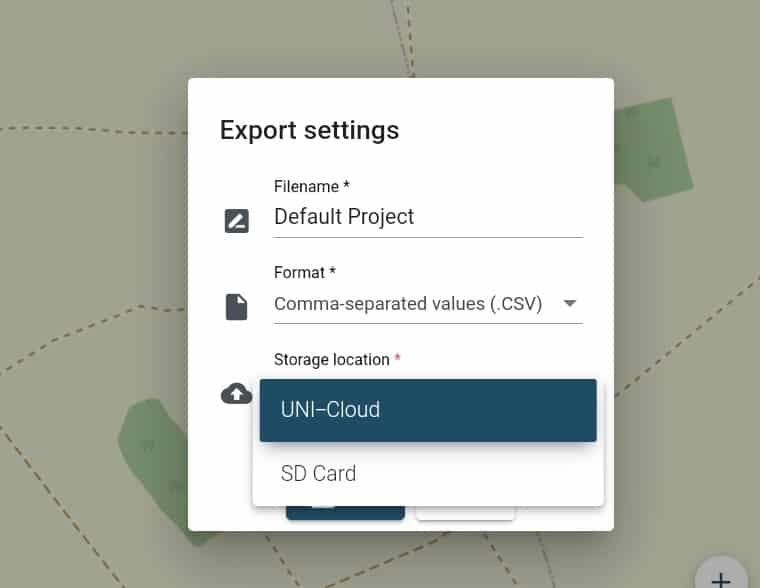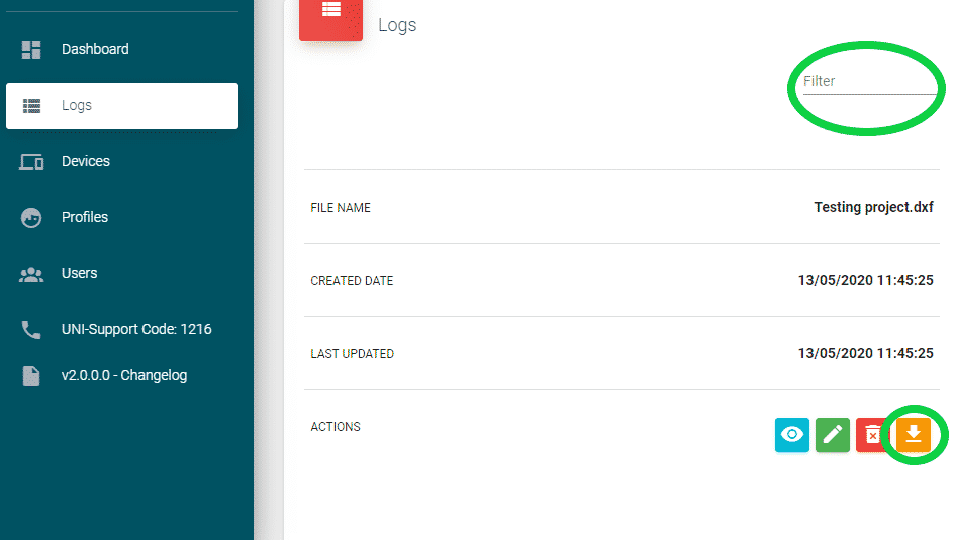How do I export DXF / CSV files and open them on another device?
Open the project
Before you can export your DXF/CSV file to your desktop computer, there needs to be a project with data (points, polylines, polygons etc…) that can be exported. When you have made a project and surveyed points, you need to have the project open and press on the three points in the toolbar within the project. When you’ve pressed it, you will see a window, like below where you will see “Import” and “Export“.

When you have pressed export, you have to choose your filename. This can be anything you like, by default this is the name of the project.

DXF or CSV?
Under “Format” you can select which file type you want to export. This can be DXF or CSV. A DXF can be exported to the UNI-Cloud only and CSV can be both exported to the UNI-Cloud and the SD-Card.
CSV will get you all the survey data in comma separated values, DXF will get you an AutoCAD ready drawing with everything in the layers you used and optionally the Height, Point ID’s and Attributes in the label.

Where do you save your file?
If you choose to save your file on the SD-Card, you can remove the Micro SD-Card from the UNI-GRX after you have turned it off and open it with any other SD-Card compatible device. If you choose to export the file to the UNI-Cloud environment, and click save you will get a feedback message saying it’s being sent to the UNI-Cloud. Once you get a green confirmation message, you can open the file from any device anywhere in the world on the UNI-Cloud.

Your file is waiting in the cloud
When you have exported the DXF- or CSV-file to the UNI-Cloud you can download it from the UNI-Cloud environment by browsing to https://cloud.marxact.com. Log in with your credentials and go to Logs. Here you can find all the exported files. Search(or filter) the file and download it by pressing on the Download icon, just like in the picture below. After downloading you can immediately open the file. You can open the DXF file in AutoCAD and/or the CSV file in Excel, of course you could also just add the file as an attachment to your e-mail using an e-mail program and send it to a colleague in case he or she does not have access to the UNI-Cloud.

